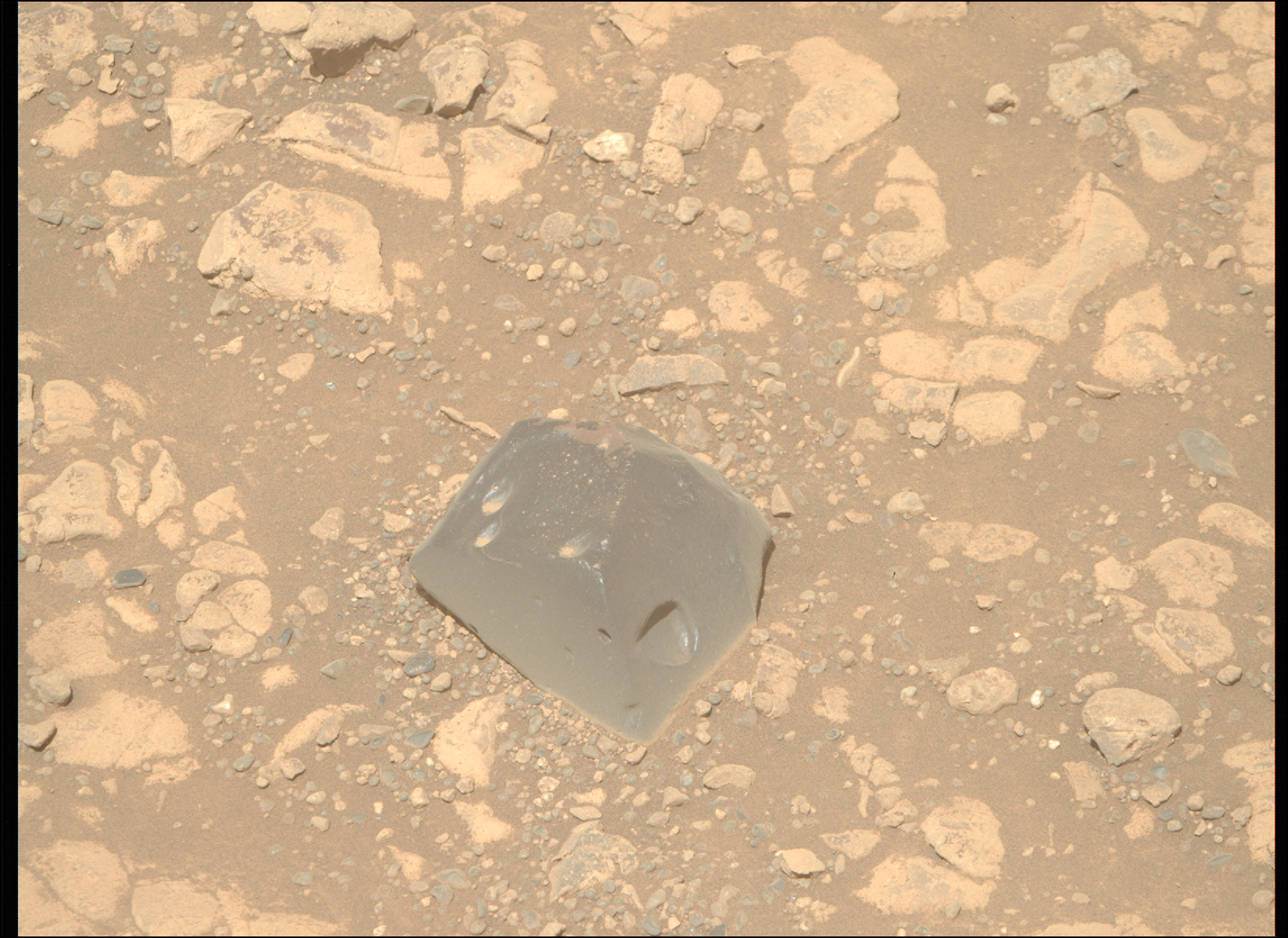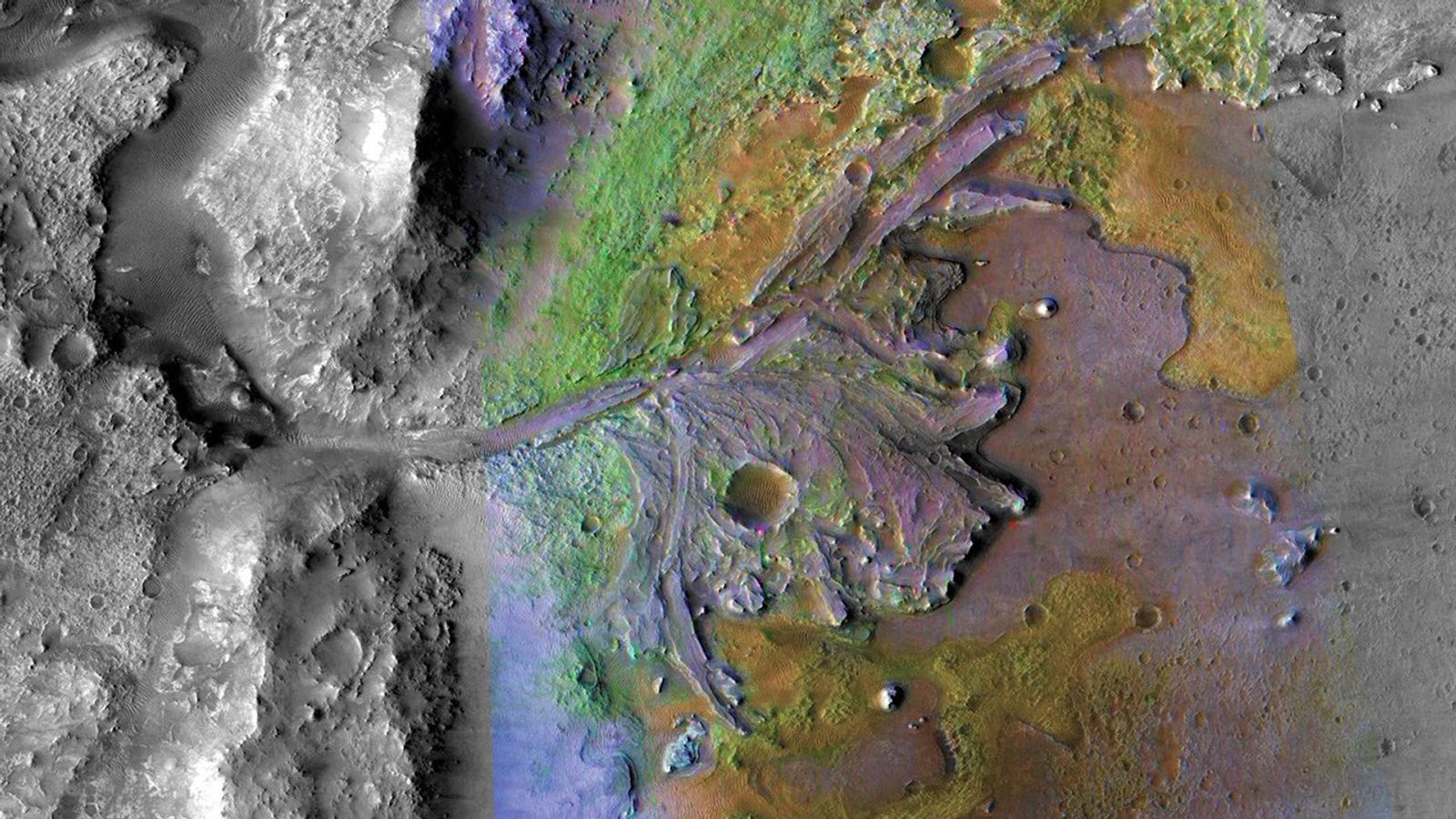Origins Uncertain: ‘Skull Hill’ Rock
- The NASA Mars 2020 rover has encountered a unique rock called ‘Skull Hill’ while exploring the Jezero crater rim, which features a dark-toned float rock with angular surface and pits.
- Scientists are unsure about the origin of ‘Skull Hill’, but it may have formed via erosion or scouring by wind, or could be an igneous rock eroded from a nearby outcrop or ejected from an impact crater.
- The rover’s instruments can measure the chemical composition of rocks on Mars, which will help the team to interpret the origin of ‘Skull Hill’ and understand its connection to meteorites found in Gale crater.
- ‘Skull Hill’ is similar to other dark-toned floats found in the Port Anson region, but recent analysis suggests a composition inconsistent with a meteorite origin, leaving scientists to continue investigating its origins.
- The discovery of ‘Skull Hill’ and other similar rocks provides valuable insights into the geological history of Mars and may help scientists better understand the planet’s past, present, and potential for life.
2 min read
Origins Uncertain: ‘Skull Hill’ Rock
Written by Margaret Deahn, Ph.D. Student at Purdue University
Last week, NASA’s Mars 2020 rover continued its journey down lower ‘Witch Hazel Hill’ on the Jezero crater rim. The rover stopped along a boundary visible from orbit dividing light and dark rock outcrop (also known as a contact) at a site the team has called ‘Port Anson’. In addition to this contact, the rover has encountered a variety of neat rocks that may have originated from elsewhere and transported to their current location, also known as float.

Pictured above is an observation named ‘Skull Hill’ taken by the rover’s Mastcam-Z instrument. This float rock uniquely contrasts the surrounding light-toned outcrop with its dark tone and angular surface, and it features a few pits in the rock. If you look closely, you might even spot spherules within the surrounding regolith! See Alex Jones’ recent blog post for more information on these neat features: https://science.nasa.gov/blog/shocking-spherules/. The pits on Skull Hill may have formed via the erosion of clasts from the rock or scouring by wind. We’ve found a few of these dark-toned floats in the Port Anson region, and the team is working to better understand where these rocks came from and how they got here.
Skull Hill’s dark color is reminiscent of meteorites found in Gale crater by the Curiosity rover: https://www.jpl.nasa.gov/news/curiosity-mars-rover-checks-odd-looking-iron-meteorite/. Chemical composition is an important factor in identifying a meteorite, and Gale’s meteorites contain significant amounts of iron and nickel. However, recent analysis of SuperCam data from nearby similar rocks suggests a composition inconsistent with a meteorite origin.
Alternatively, ‘Skull Hill’ could be an igneous rock eroded from a nearby outcrop or ejected from an impact crater. On Earth and Mars, iron and magnesium are some of the main contributors to igneous rocks, which form from the cooling of magma or lava. These rocks can include dark-colored minerals such as olivine, pyroxene, amphibole, and biotite. Luckily for us, the rover has instruments that can measure the chemical composition of rocks on Mars. Understanding the composition of these darker-toned floats will help the team to interpret the origin of this unique rock!







